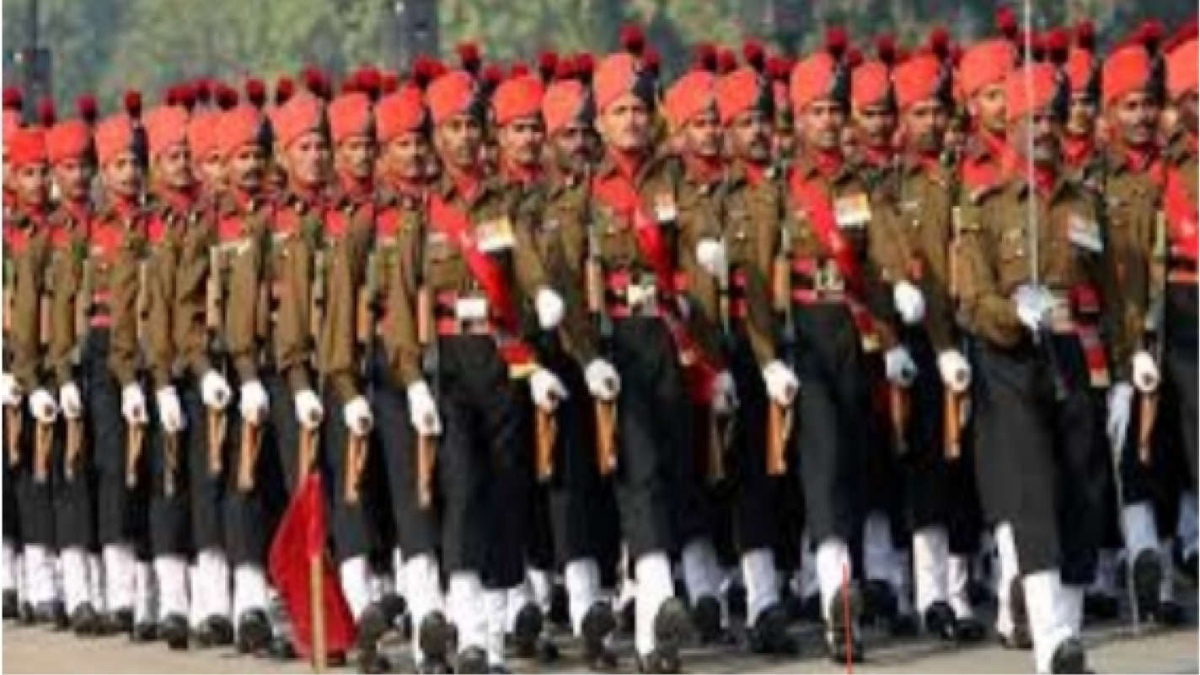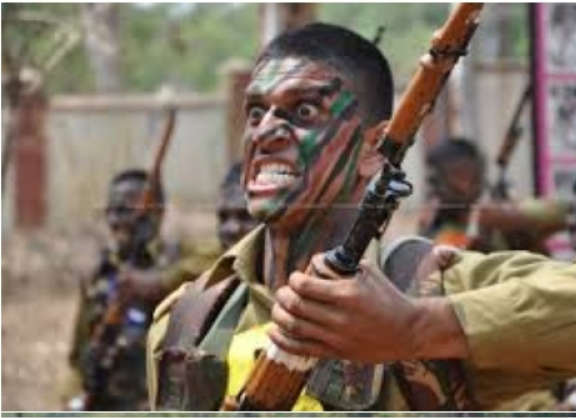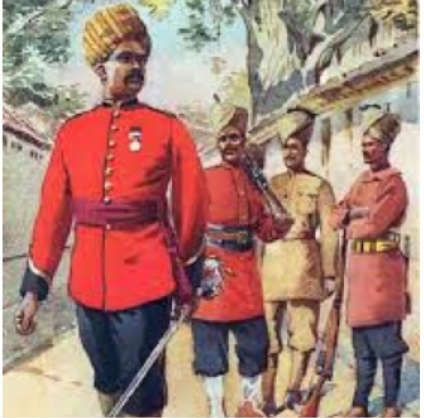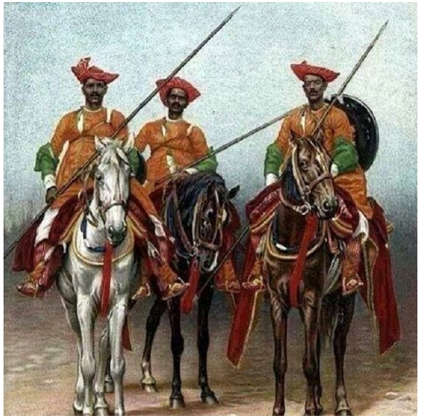


Chhatrapati Shivaji Maharaj is the most revered icon of the Marathas who laid the foundation of Swaraj (self-rule) in the Indian sub-continent. The year 1670 was a watershed year when, on 4 February, a small contingent of sharp warriors selected by Shivaji climbed the Kondana fort near Pune in the most ingenious manner and attacked the heavily guarded fort, sited on a hilltop with cliff around it, taking the defenders by a complete surprise. A fierce hand to hand combat ensued, defeating the Army of Mughals. This significant success by a small contingent became a great motivation for creation of a larger force. The Marathas soon captured many forts in quick succession leading to the rise of the Maratha Warrior with Shivaji Maharaj as their crowned leader.



The Maratha Light Infantry is one of the oldest regiments of the Indian Army, raised 253 years ago. The battle cry of the regiment is ‘Bol Chhatrapati Shivaji Maharaj Ki Jai’. These units have a bust of Shivaji as the central symbol of motivation. Shivaji Maharaj trained his soldiers in Guerrilla Warfare. The Maratha units were formed under the title of Bombay Sepoys by the British in 1768. Soon the Regiment earned glory, especially during the Great Wars when it was given the title of ‘Light Infantry’ where the units had demonstrated their ability to mount surprise attacks at lightening speeds. This was symbolically reflected in the Regimental contingents marching at a faster pace of 140 steps in a minute as compared to other infantry units pacing 120 at the ceremonial parades. These units were apt at striking from the flanks wearing dark uniforms. The Second Battalion, The Maratha Light Infantry was nicknamed Kali Panchwin—the dark unit. Till date, these units wear the badges of rank and crests over black backings, reflecting their ability to fight with stealth and surprise. The ceremonial drill has another uniqueness, there is no word of command as ‘Savdhan’—the Maratha soldier is never brought to ‘attention’, symbolising that the troops are launched into action without warning. Such traits in the units come from the Maratha Warrior’s way of war-fighting—a legacy of Chhatrapati Shivaji Maharaj.
The Saga of capture of Kondana fort defines the Regiment’s motto Duty-Honour-Courage. When Shivaji called his most trusted lieutenant Tanaji Malusre and tasked him for capturing the Kondana fort, he learnt that Tanaji was preparing for his son Raiba’s wedding. Realizing this, Shivaji asked Tanaji to postpone the capture plan and instead go ahead with the wedding of Raiba; Tanaji felt that he must do the duty first in executing this honorable task and said “Pehle shadi Kondana ki, fir mere bete Raiba ki. “First, let me marry the Kondana, and later shall I get Raiba married”. He took the select handful of soldiers on the night of 4 February 1670, climbed the sharp cliff of the fort using the rope tied to a Ghorpad (Monitor Lizard) nicknamed Yashwanti and unsuspectedly charged on the enemy. While putting up a very courageous hand to hand fight, Tanaji Malusre lost his life. His warriors however captured the fort using surprise and lightening attack. On hearing this news of victory, he grieved the loss of Tanaji saying ‘Garh Ala Pan Sinh Gela’ (We have vanquished the fort but lost the Lion). Since then, he renamed Kondana fort as ‘Sinhgarh’ which means ‘Fort captured by his Lion’. The Maratha Light Infantry adopted ‘Sinhgarh’ as the martial marching tune usually played by the Regimental Band for the ceremonial March. The Motto ‘Duty – Honour – Courage’ of the regiment is a testimony of the rich martial history of the Regiment. The Regiment rightly celebrates 04 February, each year as the Maratha Day.
The Maratha LI is the only regiment in the Indian Army that has contributed to two Special Forces of the Indian Army, that is 2 Para (SF) erstwhile 3 Maratha LI and 21 Para (SF) erstwhile 21 Maratha LI. The Regiment is affiliated with 20 Squadron IAF also nicknamed as ‘Lightnings’- one of the first squadrons of the IAF to be equipped with Sukhoi Aircraft. Both titles signify warriors that relate to the speed of light. The Regiment also is affiliated with one of the most powerful Indian Navy’s destroyers in the Indian Ocean named INS Mumbai, that demonstrates the glory of the sea faring Force under the Maratha Admiral Shivaji Kanhoji Angre. Similarly, The Coast Guard unit located at Diu is also affiliated. The Maratha warrior was trained in different forms of warfare, apt at fighting Guerilla Warfare, set piece battles as also capable of mounting attacks from the seas. No wonder the British were vary of Shivaji who proved to be a handful not only to Mughals but also the British.
In an incident, during the Second world war, the British were facing a challenge of not being able to motivate the Marathas to fight for the British cause. The British Commanding officer of the 3 Maratha asked the Subedar Major of the unit, “Sahib, what would motivate the soldiers to fight”? The Subedar Major was quick to advise that the Battle cry of the unit should be ‘Bol Chhatrapati Shivaji Maharaj Ki Jai’. The Commanding officer saw fire in the eyes of the Marathas, on shouting the newly adopted battle cry. The Marathas charged into the defences of the enemy like lightening, bringing the unit repeated glory in the battle. The units of the Maratha LI continue to perform very gallantly in the battlefield with this battle cry. The Regiment is decorated with two Victoria Cross winners in the Great War and post-independence too has been one of the highest decorated regiments of the Indian Army to include five Ashok Chakras won in Counter Insurgency Operations. The regiment prides itself in winning the Battle Honour ‘Sharqat’ at Mesopotamia, wherein, in a single action maximum number of gallantry awards were won by a single unit—still an unbeatable record.
As Colonel of the Maratha Light Infantry, I was privileged to be associated with this martial race who have given a gallant account of itself across ages and times in battlefields across the globe. Yuan Chwang, a Chinese philosopher traveler of the 7th century describes Marathas as simple, honest, proud and reserved. He observes that these people return kindness with gratitude but if anyone injures them; they risk their life to wipe out the dishonor. He points at their special trait of never failing to warn the enemy but sparing those who surrender. Even after 13 centuries of this observation, the traits of the Maratha Warrior are as stellar as described by Chwang. I am proud to have commanded men of such virtues. The Maratha Light Infantry song, in its first stanza describes this trait “Mard amhi Marathe Khare, Dushamana la Bhare Kapare” (We are pure Brave Warriors, who make the enemy shiver).
This year too, the Regiment would mark 4 February as the Maratha Day with renewed gusto, as the Indian armed forces face new challenges on the national borders.
Lt Gen P.J.S. Pannu was commissioned into 22 Maratha LI and commanded the same unit. He was the Colonel of the Maratha LI for over five years. He is also a former DG Infantry and Former Deputy Chief of IDS.